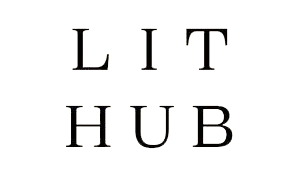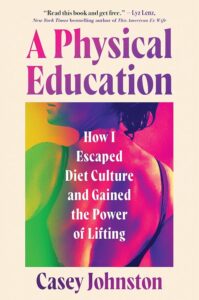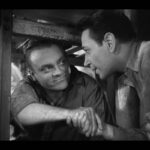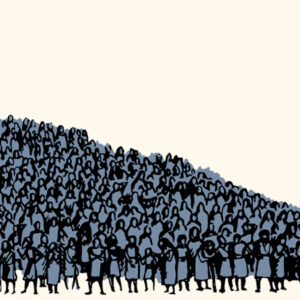
Casey Johnston on Writing the Body
“There was more of me pent up in there waiting to be unleashed than I’d ever imagined.”
This first appeared in Lit Hub’s Craft of Writing newsletter—sign up here.
It can be difficult to be honest and take an earnest inventory when writing about oneself. As a person with enough food and body issues to fill a book (which I did), I found my body, as a topic, especially tough. I have read a lot of writing on bodies—their needs, their shapes, our wars with and on and for them. At first, I was just a consumer, searching for myself and my truth in their pages, but never finding quite what I was looking for. By the time I finally sold my book pitch for A Physical Education, I hadn’t found an ideal role model for this kind of writing, which meant I’d have to assemble the plane as it was taking off.
Most of the bodily challenges I faced in life revolved around disconnecting and dissociating: If I was about to be forced into a car with my drunk-driving father, I sensibly wanted to depart reality. For another, as I grew up, I found that so much of our cultural programming condoned and even encouraged this disconnection. As a woman, I was supposed to “deny” my cravings in order to adhere to eating 1,200 calories a day, to become and then remain thin, which was more important than how I felt. As I got into cardio “for my health” (read: to lose weight), I was supposed to ignore the pain in my muscles, the shortness of my breath, in order to transcend them. For a writer whose job was to relate her emotional and physical experiences, make them tangible and legible as well as digestible, this was a tricky place to start.
There is an uncomfortable reality to a lot of body-related disordered behavior, which is that the person going through it is both the victim and the aggressor. It is possible, in some sense, to be too honest: it’s already difficult to watch a person on the page execute some of the ugliest disordered maneuvers, and it doesn’t compute, on some level, for the same person to be the one being hurt, and unable to stop hurting themselves. Like if your brother were smacking your face with your own hand saying “stop hitting yourself” and you were both yourself and your brother. As the writer, in addition to being both victim and aggressor, you must also be the empathetic, insightful observer who is exasperatingly unable to intervene. That’s a lot of hats to wear for anybody.
At this juncture, I have to give some credit to therapy. Even just having a dedicated time and place to look directly at my feelings, only for an hour a week, goes a long way. But still, when it came time to documenting all of this, I found I had to separate the tasks.
I know plenty of people who espouse the “shitty first draft,” which they then shape and mold into a readable, presentable second draft. For me, this is starting way too far along in the development process. Asking myself what chapter I should write first was like asking what color to dye the cake frosting when I hadn’t even bought the flour yet.
As the writer, in addition to being both victim and aggressor, you must also be the empathetic, insightful observer who is exasperatingly unable to intervene. That’s a lot of hats to wear for anybody.
I needed to give myself room for totally shapeless, aimless prose-wandering. I needed to walk around in the forest of my thoughts and feelings without any particular goal. Writing longhand actually helps me with this, because even though I can’t even type that fast, my fingers can go faster than my brain; writing with my hand helps keep the content a little more concentrated, even as I am writing aimlessly. It feels important, too, to preserve the physical act of writing when writing about physicality.
Writing this book involved a lot more sitting and staring into space than felt ideal for me. In those moments, I was struggling to work out my thoughts on multiple different levels. I had to let each side speak individually, and then let them all talk to each other to work things out. And then, finally, a fourth self, the reader self, had to come in and evaluate everyone’s work.
While writing A Physical Education, I found that even after I’d started writing formally, or when I was revising, I’d start to get squirrely about writing directly in the doc. If I wasn’t sure what to say, I would sidebar with a new text window or piece of paper and effectively just start talking to myself through writing—the old advice about trying to work things out by explaining them to someone else, but the conversation is all between my head and my hand(s), facilitating exchange between my selves as protagonist, antagonist, and Greek chorus. For most of my life I’d rarely thought of my body as containing my self—that was my brain’s job—only to find that once I inhabited it more deliberately, there was more of me pent up in there waiting to be unleashed than I’d ever imagined.
________________________________________________
A Physical Education by Casey Johnston is available via Grand Central Publishing.
Casey Johnston
Casey Johnston runs the newsletter She's A Beast and is a writer who lives in Los Angeles. Her book A Physical Education is forthcoming from Simon and Schuster's Atria/One Signal.




















